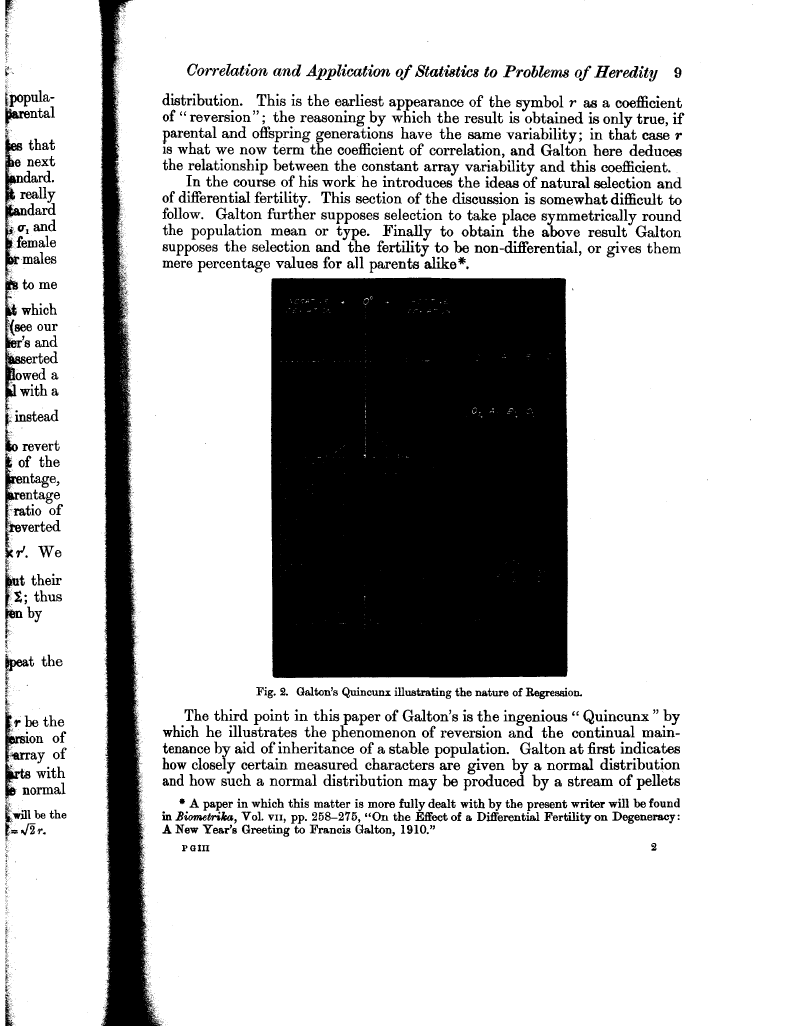| ||||||

OCR Rendition - approximate
.populaOarental s6 that
dt's to me which ,(see our is and Passerted owed a l with a i instead 60 revert of the ntage, rentage ratio of ,reverted k r'. We Out their thus ten by peat the r be the
y will be the ~ 42 r.  Correlation and Application of Statistics to Problems of Heredity 9 distribution. This is the earliest appearance of the symbol r as a coefficient of " reversion" ; the reasoning by which the result is obtained is only true, if parental and offspring generations have the same variability; in that case r is what we now term the coefficient of correlation, and Galton here deduces the relationship between the constant array variability and this coefficient. In the course of his work he introduces the ideas of natural selection and of differential fertility. This section of the discussion is somewhat difficult to follow. Galton further supposes selection to take place symmetrically round the population mean or type. Finally to obtain the above result Galton supposes the selection and the fertility to be non-differential, or gives them mere percentage values for all parents alike*.  Fig. 2. Galton's Quincunx illustrating the nature of Regression. The third point in this paper of Galton's is the ingenious "Quincunx " by which he illustrates the phenomenon of reversion and the continual maintenance by aid of inheritance of a stable population. Galton at first indicates how closely certain measured characters are given by a normal distribution and how such a normal distribution may be produced by a stream of pellets * A paper in which this matter is more fully dealt with by the present writer will be found in Biometrika, Vol. vii, pp. 258-275, "On the Effect of a Differential Fertility on Degeneracy: A New Year's Greeting to Francis Galton, 1910." Pain 2
|